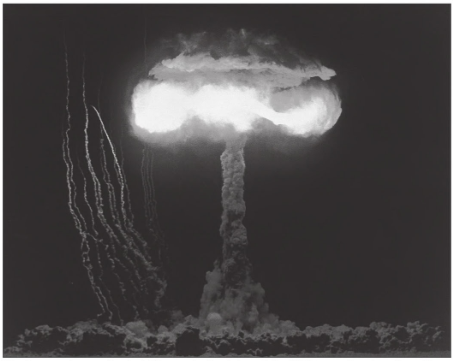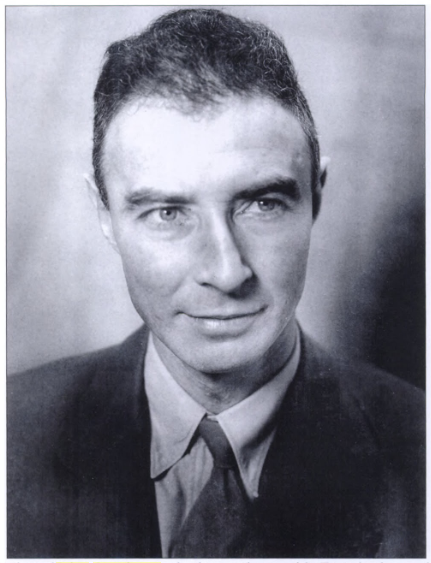In August, 1945, the war in Europe was finally drawing to a close. Now, American forces were focusing their attention on the battle in the Pacific Ocean. After years of bloodshed, coupled with Japan’s refusal to surrender, President Franklin D. Roosevelt gave permission to American scientists to begin the Manhattan Project – an endeavor that would lead to the execution of one of the most controversial events in the country’s history. Here, we’re looking back at the pivotal moments, key players, and the public’s response to the development of the atomic bombs.
Developing the Project
Nuclear fission, the chemical mechanism that fuels an atomic explosion, was first discovered in a German laboratory in 1938. Scientists learned that when the atom of radioactive material suddenly splits into several smaller atoms, it releases an explosive amount of energy. Now, the stage was set for them to begin experimenting on weapons with devastating potential.
After having fled from Nazi Germany, world-renowned scientist Albert Einstein was living in the United States during World War II. Before he left, he had learned of the development of atomic weapons in Germany. He wrote to President Roosevelt, warning him of the potential destruction should Germany be successful in creating a functioning bomb. Roosevelt had heard of the weapon before, but hadn’t taken the warning seriously. The letter from Einstein finally forced Roosevelt into action, and so in 1941, the Manhattan Project was born.
Columbia University, University of Chicago, and University of California, Berkley were among the earliest institutions tasked with researching nuclear fission. At the University of Chicago, under the leadership of Enrico Fermi, a scientist who fled Fascist Italy, a successful nuclear chain reaction was conducted. With proof that the weapon could work, the American government offered funding to open several more research locations throughout the country. The headquarters of this expanded research was located in Los Alamos, New Mexico, and ultimately led by scientist Robert Oppenheimer. Today, Oppenheimer is considered the “Father of the Atomic Bomb.”

Roosevelt and British Prime Minister Winston Churchill decided early on that only a small number of top scientists would be involved in the project, as keeping it a secret from Germany and Japan was crucial to its success. By 1945, the project was ready for testing. At Trinity Site in New Mexico, eager scientists detonated the first atomic bomb, but no one was prepared for what they witnessed that day.
A massive mushroom cloud shot 100-feet into the air, with a luminous burst of light brightening the morning sky. The flash was visible up to 200 miles away, and the force blew out the windows of civilian homes over 100 miles away. The American government released a statement to a concerned public that the blast had resulted from the explosion of an ammunition dump in the desert. No one suspected the country had just entered the nuclear age. President Truman, who had recently come to power after the death of President Roosevelt, was told the bomb was successful, leaving him with a harrowing decision of how to use such power.
Dropping the Bombs

By the time the atom bomb was completed, Americans were becoming wary of the war in the Pacific. With the Japanese relentless in their attacks on the American military, it seemed their soldiers would fight until there was no one left standing. After the bloody invasion of Iwo Jima, Truman was faced with a choice: an invasion of mainland Japan that he estimated would result in even more deaths on both sides, or drop the atomic bomb. In the years after dropping the bombs, Truman would note it as the most difficult decision of his life.
First, Allied powers demanded full surrender of the Japanese army. When Japan’s leadership refused, the Enola Gay dropped the first bomb on Hiroshima on August 6, 1945. Upon detonation, the bomb instantly killed 70,000 Japanese citizens, with another 100,000 dying of burns and radiation in the following years. Again, Japan was asked to surrender. The Soviet Union declared war on Japan, but still the country refused. On August 9, the second bomb was dropped on Nagasaki, killing 80,000 Japanese citizens. Finally, on August 14, the Japanese surrendered, and World War II came to a close.
Americans React
The American public’s response to the news of the bombs was mixed. Those with loved ones fighting overseas were relieved the war was finally over, as families and friends could finally be reunited. Celebrations took place in communities across the country.
However, there was also a lot of fear. Many Americans worried what sort of implications the use of atomic weapons in war would have on future conflicts. People feared such technology, should it fall into the wrong hands, would be used to destroy the world. Some of these concerns came to fruition during the Cold War between the United States and Soviet Union.
There were also mixed reactions regarding the ethics of dropping the bombs. Some Americans believed them wholly necessary, while others viewed them as malicious and unforgiving. Truman and the American government tried to sway these critics by releasing pieces of propaganda that explained the reasoning for dropping the bombs. Still, the debate continued.
The United States sent a message to countries around the world with the dropping of the atomic bombs: the world had entered a new age of nuclear technology – one capable of producing devastating outcomes. The scientists who worked on the bombs failed to recognize the results. The blasts were larger than expected, and the radiation poisoning that followed proved horrific for communities surrounding Nagasaki and Hiroshima. The ethical debate of nuclear weapons in wartime had begun – a debate that has continued to today.

